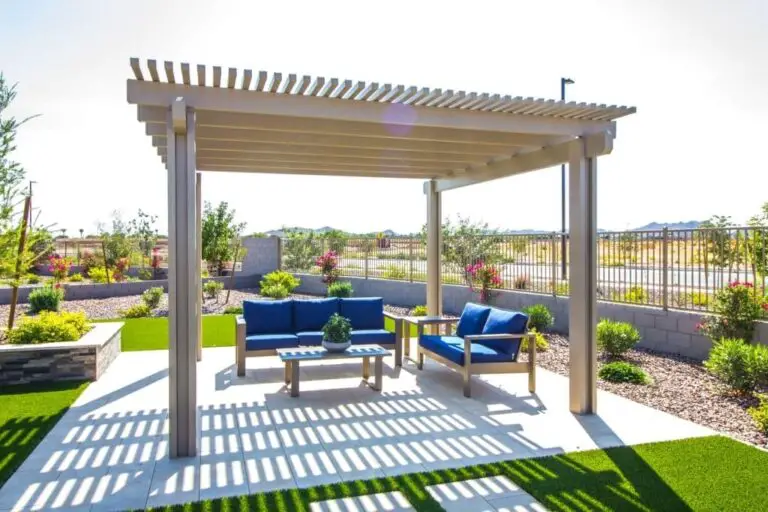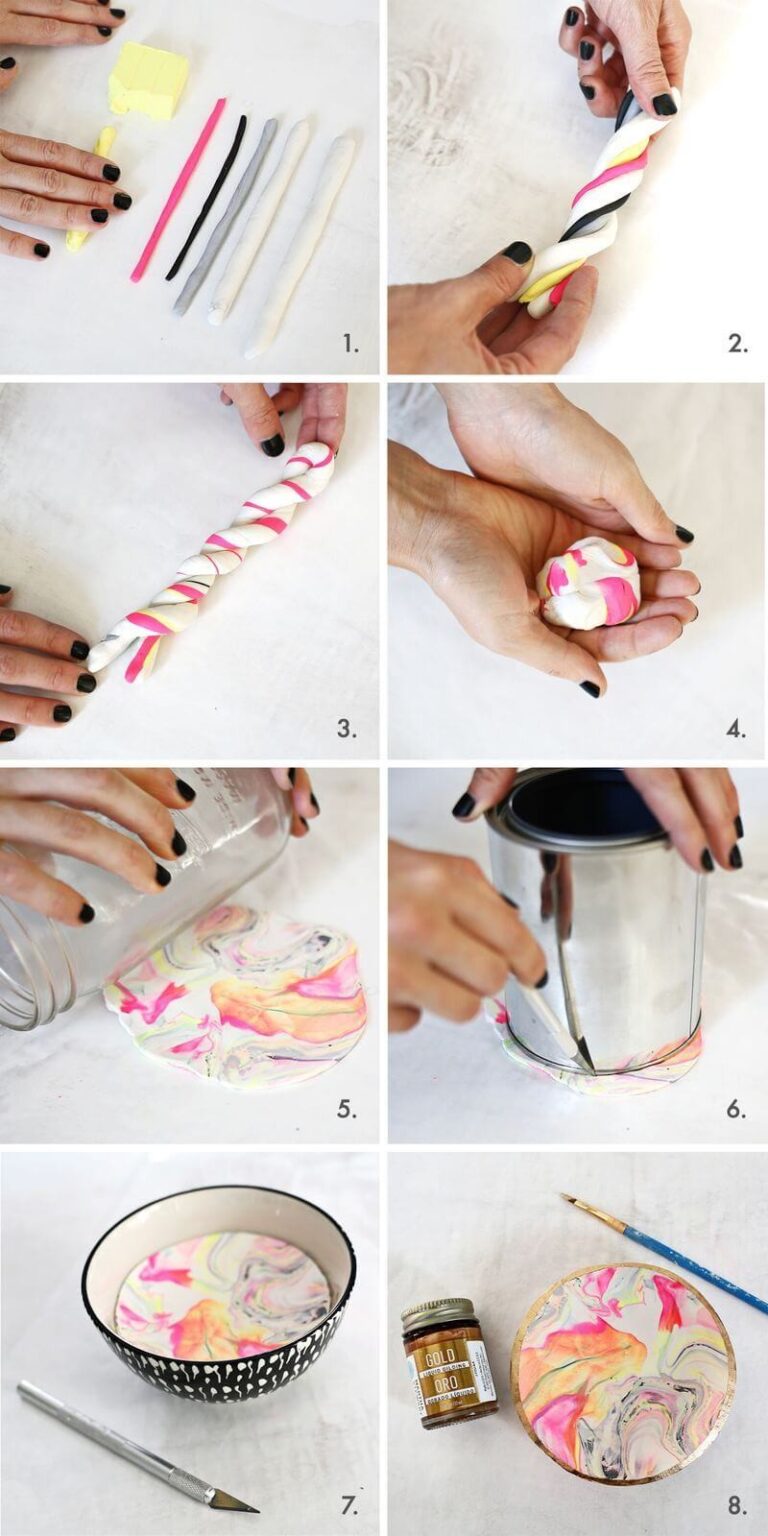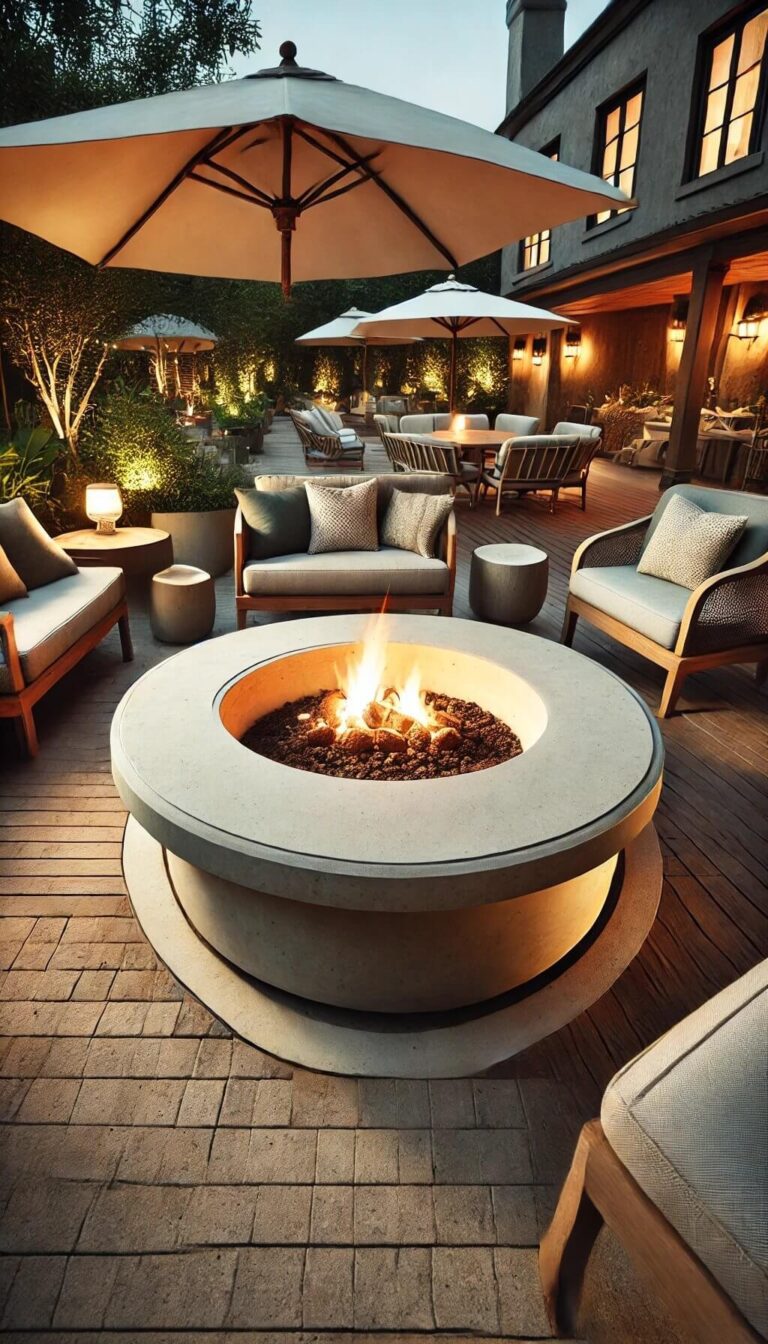31+ Best Basement Stairway Ideas And Designs
When it comes to remodeling and improving a basement, often the stairs take a backseat. However, a well-designed walkway can be a game-changer in transporting us into our newly transformed living spaces. The staircase is more than just a means of transportation; it sets the tone for the entire space. With various options available, upgrading your basement stair doesn’t have to be a daunting task.
Here are some inspiring ideas and suggestions to consider when designing or renovating your basement stairs. From ornate railings to sleek glass installations, there’s no shortage of creative possibilities. You can also elevate the look with bold paint colors, playful patterns, or even a grand staircase. For those who prefer a more understated approach, subtle changes like installing carpeted treads or adding a wooden finish can make all the difference.
In addition to aesthetic considerations, functionality is equally important. You might want to incorporate storage solutions, such as bookcases or drawers, to keep clutter at bay. Lighting, too, plays a crucial role in creating a welcoming atmosphere. Whether you opt for motion-sensitive lights or install a light fixture at every step, the right lighting can make a significant impact.
Beyond these practical considerations, the staircase itself is an opportunity to add personality and character to your basement. You can add artful touches like prints, patterns, or even custom stencils to create a unique look. For those who prefer a more rustic approach, wooden trim or bead board reinforcement can bring warmth and coziness to the space. In conclusion, upgrading your basement stairs is an opportunity to get creative and make a lasting impression.
With so many options available, you’re sure to find the perfect combination of form and function to suit your style.
Basement stair railing ideas
Ornate stair railing

Elevate the ambiance of your basement stairs by thinking outside the box when it comes to customizing your staircase’s railings. While maintaining the integrity of hardwood handrails, add a touch of elegance by incorporating ornate symbols between the wood grain. These symbols can be traditional motifs or even personalized with initials, names, or family crests. For inspiration, consider a design that incorporates intricate patterns and flourishes, as seen in this example.
Contemporary glass railing
Elevate your basement’s ambiance by incorporating glass railings with metal handrails on one side, creating a harmonious blend of modern, delicate, and warm elements. To further enhance the space, consider installing pendant lights above each step and strip lighting along the railing for a dramatic effect. This combination will beautifully complement polished wood flooring, resulting in a sophisticated and inviting atmosphere.
Basement stair paint ideas
Stair runner color splash
When it comes to painting your basement stairway, the possibilities are truly endless. You can opt for a sleek and polished finish by incorporating a colorful runner that adds a burst of personality to the space. This design element allows you to balance the refined look of hardwood stairs with a touch of whimsy and flair.
Feel free to get creative and let your artistic side shine through, whether you prefer abstract patterns or symmetrical designs – the key is to choose a painting style that speaks to you and reflects your personal aesthetic.
Mildly playful look

When renovating a basement stair, consider a neutral color palette to ensure the design complements any type of room in your home. A range of milder tones such as light gray, beige, baby blue, sky blue, and lavender can create a versatile look that blends seamlessly with a white stair frame. This subtle yet effective approach allows you to easily transition from a cozy lounge area to a kids’ playroom, bathroom, kitchen, or study room without compromising on visual harmony.
Open basement stair ideas
Dainty and airy look
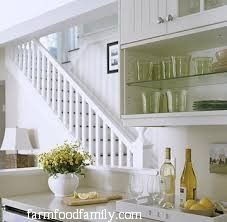
Wooden balusters with narrow gaps between them are perfectly suited to create an open and airy atmosphere in a basement. The subtle visual separation provided by the thin gaps allows for a sense of spaciousness, while the all-white aesthetic gives the space a crisp and modern feel. When this design element is used to descend into a cozy corner bar or lounge area, it adds a touch of sophistication to the overall ambiance.
Grand steps
Transforming a humble basement into a majestic space requires creative thinking and strategic design choices. One such approach is to upgrade the stairs, turning them into a grand staircase that commands attention. By using engineered wood for the treads and incorporating generous gaps between each step, you can create a sense of openness and airiness. Meanwhile, reinforcing the railings with sturdy steel adds an element of sophistication and stability.
This design combination not only elevates the aesthetic appeal but also provides a functional and safe means of navigation. With careful planning and execution, you can turn your open basement staircase into a showstopping feature that draws the eye and inspires exploration.
Basement stair covering ideas
Carpeted staircase
Carpets possess a unique ability to harmonize and soften any interior setting, effectively transcending disparate design elements. A neutral-hued carpet like this ashen gray example can effortlessly blend with an eclectic mix of decorations and color schemes, creating a cohesive look that elevates the overall aesthetic.
Covered with runners
When selecting a stair runner, it’s essential to consider the overall aesthetic you’re aiming for, just as you would when choosing a carpet. However, unlike carpets, stair runners offer greater flexibility in terms of installation and maintenance. This particular design showcases a cleverly clipped-in runner using metal rods, which is further elevated by the addition of LED lights along each step.
The result is a harmonious blend that seamlessly integrates with the neutral atmosphere of this partially open basement.
Outdoor basement stair covering ideas
Rubber treads

When it comes to outdoor basement stair covering, one popular option is rubber treads. Not only are they versatile enough to be used as risers or for cushioned steps, but they also provide a crucial safety feature by reducing slipping hazards during rainy or snowy weather conditions. With the ability to fully cover each step or opt for half-coverage, homeowners can choose the level of protection that best suits their needs.
Resin bonded outdoor basement stair

One strategy for securing an outdoor basement stair and ensuring a non-slip surface is to cover it with bonded resin. This approach proves particularly effective when dealing with outdoor basement stairs constructed from natural stone slabs, such as the example shown.
Basement stair door ideas
Barn style sliding door
The rustic charm of a wooden sliding door, reminiscent of a farmhouse’s barn-style design, can add a unique touch to an open-concept basement with its beige, brown, and white color palette. This unassuming feature can be created using repurposed wood, boasting a raw, unstained beauty that requires no additional treatment or maintenance.
French door

A timeless choice for basement entrances, a French door offers a classic solution that seamlessly blends with its surroundings. In this instance, crisp white trims were expertly paired with the polished wood railing and steps of the basement stairs, creating a harmonious visual balance. Furthermore, the French door’s white frame and beige walls are beautifully illuminated by bright wall lamps, resulting in a warm and inviting atmosphere.
Basement stair finishing ideas
Tiled stairs
Transforming the staircase in your basement living space, I propose incorporating tile finishes that evoke the warmth of Hispanic and Moroccan cultures. To further enhance the ambiance, I recommend adorning the stairs with air-purifying plants that will not only add a touch of greenery but also promote a healthier indoor environment.
For an added layer of visual interest, consider installing a vertical wood railing with strategically placed gaps, allowing for a delightful play of light and shadow.
Wood finishing
The timeless allure of wood finishing is undeniable, transcending even basement stair finishing with its sophisticated, rustic charm and warm, inviting ambiance. Its glossy, polished sheen radiates an aura of sophistication, perfectly capturing the essence of a cozy home atmosphere. And the best part? This aesthetic appeal isn’t exclusive to solid wood or hardwood stairs – any wooden surface can be transformed into a stunning focal point with the right finishing techniques.
Basement under stairs storage ideas
Bookcase by the stairs
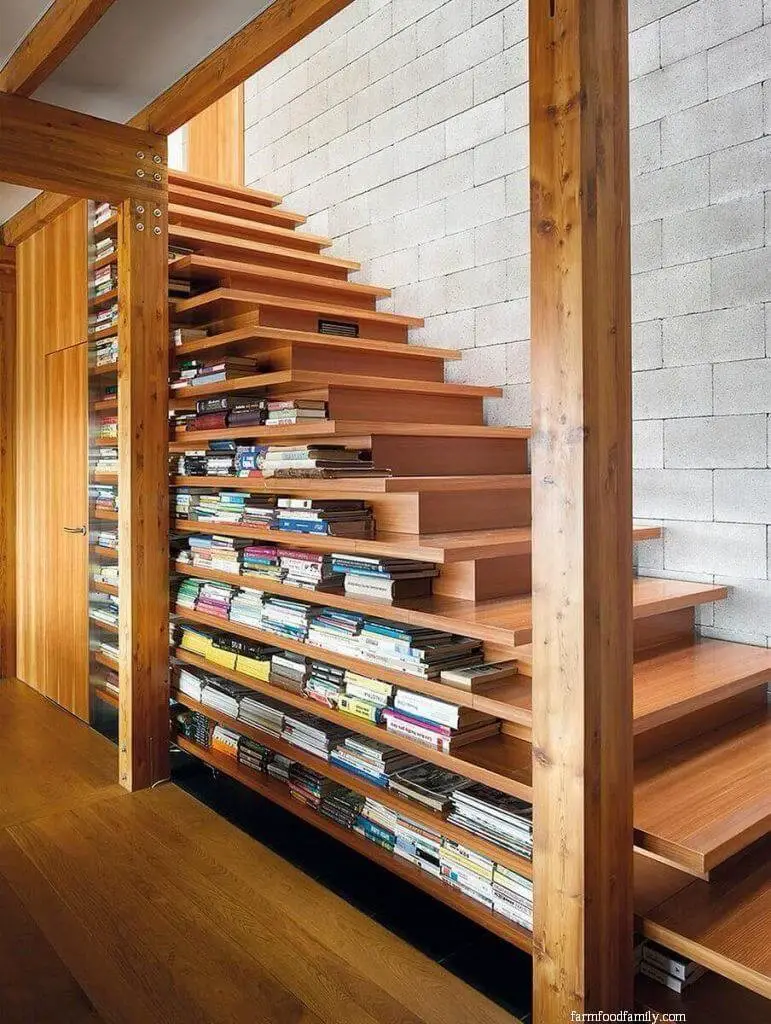
For any book lover, this design is a dream come true. Imagine transforming your basement bedroom into a cozy retreat with a built-in study area and home office. The crowning glory of this setup is the rail-less basement stair featuring shelves that wrap around and underneath the staircase itself, creating a unique and functional space that’s perfect for storing books, files, and other essentials.
Drawers by the stairs
Transforming your basement bedroom closet is an excellent way to maximize storage space and keep essential items organized. One creative approach is to install additional drawers near the stairs, effectively expanding the closet’s capacity. This upgrade can also serve as a designated spot for often-overlooked essentials like ties, hankies, and accessories that tend to get lost in the sea of belongings within the bedroom.
By repurposing this space, you’ll be able to find what you need when you need it, making your daily routine more efficient.
Basement stair lighting ideas
Light in every step
While intense illumination may not be necessary for basement stairs to make a statement, a clever lighting strategy can indeed create a striking effect. A simple yet effective approach involves installing LED strip lights beneath a wood staircase, allowing the stairs to appear as if they’re defying gravity. The absence of a handrail, which is further accentuated by an open basement layout, adds to the sense of floating steps.
This minimalist lighting technique can dramatically enhance the overall aesthetic of your basement stairs without overwhelming them.
Motion sensor stair lights
Elevate your basement’s energy efficiency by incorporating motion sensors and stylish lighting solutions. Consider installing motion sensor lights with ornate cases, such as this one, to create a sophisticated ambiance. To further enhance the space, integrate LED strip lights along the handrail or within the frame’s length, providing additional illumination and visual appeal.
This thoughtful approach will not only reduce energy consumption but also transform your basement into a warm and inviting area.
Basement stair wall ideas
Prints and patterns

Transforming a basement stair into a stylish space is often overlooked, but painting prints and patterns on the walls can be an effective way to boost its appeal. By incorporating black and white combinations, you can create a cohesive design that ties together the entire area. For instance, a simple print or pattern in shades of black and white can add visual interest to the wall, while also providing a functional touch with built-in shelves or hanging rods for storing hats and jackets.
This subtle yet effective design element can elevate the overall aesthetic of your basement stair, making it a more inviting space that’s perfect for social gatherings or everyday use.
Art splash

To add a touch of personality to your basement stair, consider incorporating visual interest through color and art. Start by painting each step in a soft pastel hue, allowing the bright colors to stand out against the darker walls. This creates a striking contrast that draws the eye upwards. Next, hang a diverse selection of artwork on the wall, including paintings, sculptures, or other decorative pieces. The resulting ‘art splash’ adds a unique and creative flair to your basement stair.
Basement stair tread ideas
Bead board reinforcement
While at first glance this hardwood stair may appear stained, it’s actually made up of layered bead board steps with a finish designed to mimic hardwood. The clever use of bead boards as both risers and treads allows for protection of the underlying wood from damage caused by heavy foot traffic in the busy basement environment.
Customized stenciled treads
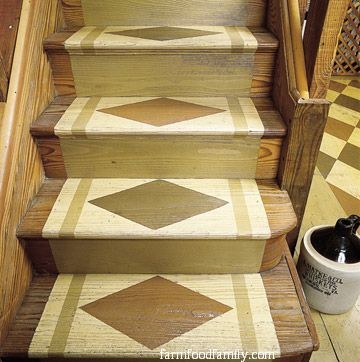
Upon closer inspection, what initially appears to be an ordinary stair runner reveals itself as a unique, hand-stenciled masterpiece. Made from cushioned fabric, these one-of-a-kind treads bring a personal touch to the humblest of spaces – in this case, the basement stairs. The thoughtful combination of colors and rustic wood design creates a harmonious fusion that elevates the overall aesthetic.
Basement stair landing ideas
Cushioned stair landing
While cushioned carpeting on basement stairs isn’t a novel concept, this particular setup stands out due to its distinctive three-layer, cake-like landing design. The fully carpeted surface promises a plush experience for bare feet, while the non-slip texture ensures safety and stability – making it an excellent choice for families with energetic children.
Sleek wooden stair landing
This stunning wooden stair landing defies convention with its sleek, industrial design. The harmonious blend of wood, glass, and steel creates a modern oasis that exudes warmth and sophistication. Moreover, the two-step wooden platform boasts an inviting softness underfoot, courtesy of its engineered solid wood construction. Every step becomes a sensual experience, as the gentle give of the wood beneath your feet provides a subtle yet satisfying tactile pleasure.
Unfinished basement stair ideas
Old school ladder
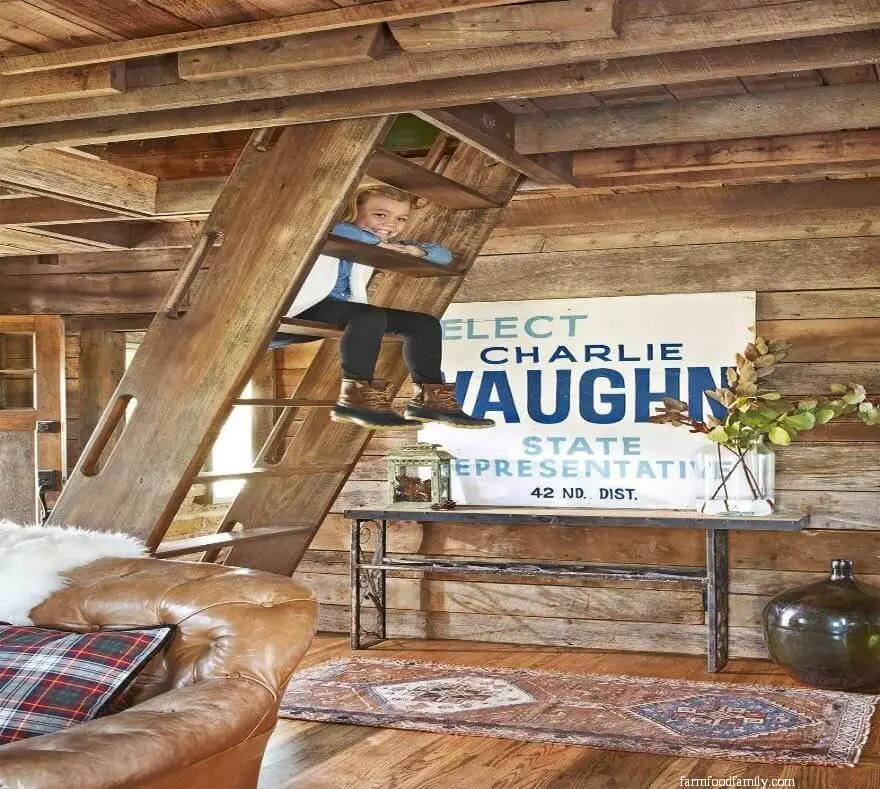
Traditional ranch-style homes are often characterized by their expansive attic spaces and basements, with the latter frequently featuring an unfinished, rustic ambiance. The old-school aesthetic is further enhanced by the presence of a ladder, often in the form of thick wooden frames with wide gaps between them, sans handrails. This unpretentious design approach embodies the quintessential charm of a classic basement.
Vintage basement storage
In this charming Louisiana home, a vintage-inspired basement storage space exudes a coastal vibe reminiscent of the Gulf Coast’s laid-back atmosphere. As you descend the traditional wood stair balustrade, the half-open stairwell creates a sense of drama and anticipation as it approaches the landing. The nostalgic wall decor and storage units seamlessly blend with the overall aesthetic, transporting you to a bygone era.
Basement stair handrail ideas
Curved stair railing
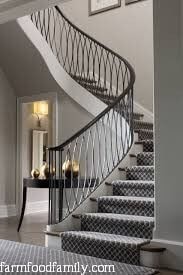
Embrace unconventional stair railing designs by opting for slanted or curved styles that deviate from the typical straight and symmetrical layouts. This approach not only adds visual interest and depth to your basement space but also injects a sense of sophistication into your overall staircase design. To further enhance this unique aesthetic, consider pairing the curved steel handrails with an oval-shaped steel balustrade, creating a harmonious blend of sleek lines and textured elements.
Wood balusters
For those who yearn for the timeless charm of wood, elevating the aesthetic appeal of your handrails can be achieved by incorporating decorative elements into your balustrade’s design. This exemplary instance showcases an oar-style balustrade seamlessly integrated with a finished wood handrail, harmoniously blending classic elegance with modern sophistication.
Basement stair trim ideas
Wainscoting stair trims
In a nod to timeless design, this traditional approach to basement stair trim adds a warm touch to wood-finished basements. By mirroring the railing and balustrade of the staircase, this trim creates a sense of cohesion and continuity, while its classic aesthetic lends a finishing touch to the overall look.
Skirted stair trims
Incorporating skirted stair trims can effectively compensate for the lack of rail-less basement stairs. This design element is particularly well-suited for open basements and modern basement designs that prioritize a seamless transition between spaces. The unique angled shape of the skirted trim adds depth, visual interest, and a sense of dynamism to the stairwell, creating a striking focal point in an otherwise open area.
Basement stair ceiling ideas
Light filled ceiling
While stair ceilings are often overlooked, this design takes a unique approach by incorporating stained wooden pallets that harmonize beautifully with the half-turn basement stair’s boxy style. The space is bathed in natural light courtesy of an elegant chandelier that flows down from above as you descend, complemented by the sophisticated glass wall window and its sleek black wood trim.
Dome ceiling
To elevate the ambiance of your basement stairs, consider a dome-style ceiling that seamlessly integrates natural light. The apex of the dome can be surrounded by skylights, which not only bring in sunlight but also create a sense of height and grandeur. Additionally, incorporating vintage-gothic chandeliers, small windows, and vintage wall lamps can add a touch of sophistication to the space.
This combination of lighting sources creates a unique and upscale atmosphere that’s perfect for a modern home.
FAQs
As you navigate the process of designing and building your basement stairway, there are several key considerations to keep in mind. To ensure a successful outcome, we’ve compiled a list of frequently asked questions that address common concerns and challenges. These answers will serve as valuable resources as you progress through construction or renovation, helping you stay on track and avoid potential pitfalls.
What type of railing to use for basement stairs?
When it comes to choosing the perfect railing for your basement stairs, you’re spoiled for choice. There’s no one-size-fits-all solution, and instead, you can opt from among four popular types of railings that cater to different styles and budgets.
Wood railings are a classic choice and remain a top pick for basement stairs in traditional homes like barn-style, Victorian, colonial, and craftsman homes.
While wood railings do come with a higher price tag, they offer timeless charm and can be made from hardwood, engineered wood, or polished wood.
For a more modern look, cable railings are a great option. They’re durable, symmetrical, and clean-lined, making them perfect for contemporary and industrial-style basement stairs. Plus, they’re versatile enough to be used outdoors or indoors, and can be paired with wooden or metal posts for added visual interest.
Wrought iron railings are another popular choice that offers a touch of sophistication when used in angled or curved stairs. They can add a luxurious feel when contrasted with wood, and their designs are virtually limitless, making them a great option for those who want to add some flair to their basement stairs.
Last but not least, stainless steel railings are a budget-friendly choice that’s perfect for floating stair designs or if you want to incorporate glass accents into your basement stairs. They can be easily enhanced with lighting and wall, ceiling colors, making them a great option for those who want to add some visual drama to their space.
It’s worth noting that while glass is a popular material for enclosing basement stairs, it’s not suitable as a railing material – which is why we haven’t included it in this list.
Does a basement stair need to be enclosed?
While there are no strict regulations mandating basement stair enclosures for homeowners or remodeling projects, there is a standardized protocol that applies to all stairs, including those leading down to basements. Specifically, any stair must feature guards on both sides, spaced at least four inches apart, as well as handrails. Risers, treads, and doors are supplementary elements that can be added, but beyond these requirements, everything else is optional.
It’s worth noting, however, that local building codes may vary when it comes to remodeling and expanding living spaces in the basement, so it’s always a good idea to consult with local authorities before embarking on any project.
What lights to use in the basement stair?
Good lighting plays a crucial role in creating a harmonious design for our basements. Even when we’re focusing on something as seemingly simple as the basement stairs, the right illumination can make all the difference. In fact, there are four primary types of lighting that can be used to create a cohesive look. The first is ambient lighting, which can be achieved through recessed can lights placed high in the ceiling or mounted on walls.
Alternatively, you could opt for distributed downlights installed on each step. Track lighting is another popular option, particularly in finished basements where energy efficiency is key. Like can lights, track lighting can be installed in-wall or beneath each step. Task lighting is also a great choice for the basement stair ceiling, with options like chandeliers or pendant lights creating a warm and inviting atmosphere as you descend the stairs.
Then there’s strip lighting, which provides a classic and cozy glow by illuminating each step. While it’s possible to focus on just one type of lighting, combining multiple styles can truly elevate the overall feel of your basement.
What kind of wood should I use for basement stairs?
When it comes to choosing the right type of wood for your basement stairs, southern yellow pine is an excellent option. In fact, this variety of pine is highly recommended for its durability and versatility. With four distinct grades to choose from – stain grade, carpet grade, paint grade, and clear pine – you can select the perfect finish for your basement stairs.
While southern yellow pine is a top pick, other wood types that are well-suited for this application include red oak, maple, cherry, mahogany, poplar, beech, alder, hickory, and hemlock.
How much does it cost to redo basement stairs?
Remodeling or constructing a basement stair can be completed within a week’s timeframe, making it an efficient process. The average cost of this project ranges from $1000 to $2000, with costs influenced by the materials chosen for renovation as well as labor expenditures. It is essential to note that these estimates do not account for additional features like fixtures, lighting, or decorations, which would require separate consideration.
Conclusion
In many remodeling projects, the stairs often take a backseat – figuratively speaking, as they’re literally the last thing we consider when designing a room, particularly the basement. However, it’s crucial to remember that this transitional space is not only a physical bridge between the main house and extended living areas but also an opportunity to create a cozy, warm, and distinctive atmosphere that ties the two spaces together.
When setting out to design or construct stairs in your basement, there are various designs and ideas to explore, as well as important considerations to keep in mind, such as budget constraints, material choices, and local building protocols – think railing, treads, and enclosure.


